By Craig Anderton
You can think of filters as combining amplification and attenuation—they make some frequencies louder, and some frequencies softer. Filters are the primary elements in equalizers, the most common signal processors used in recording. Equalization can make dull sounds bright, tighten up “muddy” sounds by reducing the bass frequencies, reduce vocal or instrument resonances, and more.
Too many people adjust equalization with their eyes, not their ears. For example, once after doing a mix I noticed the client writing down all the EQ settings I’d done. When I asked why, he said it was because he liked the EQ and wanted to use the same settings on these instruments in future mixes.
While certain EQ settings can certainly be a good point of departure, EQ is a part of the mixing process. Just as levels, panning, and reverb are different for each mix, EQ should be custom-tailored for each mix as well. Part of this involves knowing how to find the magic EQ frequencies for particular types of musical material, and that requires knowing the various types of filter responses used in equalizers.
What’s a lowpass response? A filter with a lowpass response passes all frequencies below a certain frequency (called the cutoff or rolloff frequency), while rejecting frequencies above the cutoff frequency (Fig. 1). In real world filters, this rejection is not total. Instead, past the cutoff frequency, the high frequency response rolls off gently. The rate at which it rolls off is called the slope. The slope’s spec represents how much the response drops per octave; higher slopes mean a steeper drop past the cutoff. Sometimes a lowpass filter is called a high cut filter.
 Fig. 1: This lowpass filter response has a cutoff of 1100 Hz, and a moderate 24/dB per octave slope.
Fig. 1: This lowpass filter response has a cutoff of 1100 Hz, and a moderate 24/dB per octave slope.
What’s a highpass response? This is the inverse of a lowpass response. It passes frequencies above the cutoff frequency, while rejecting frequencies below the cutoff (Fig. 2). It also Continue reading “Basics: Five Questions about Filter Response”


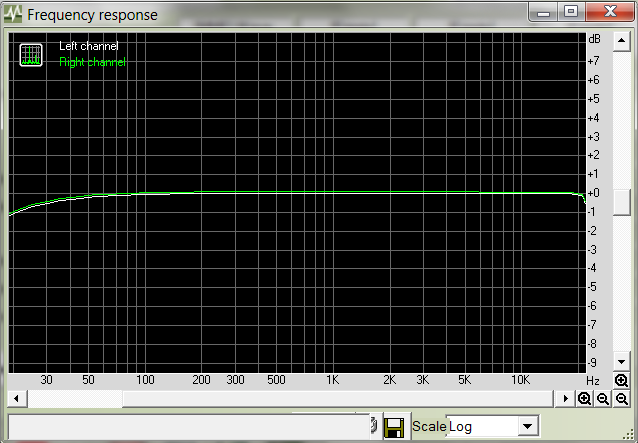
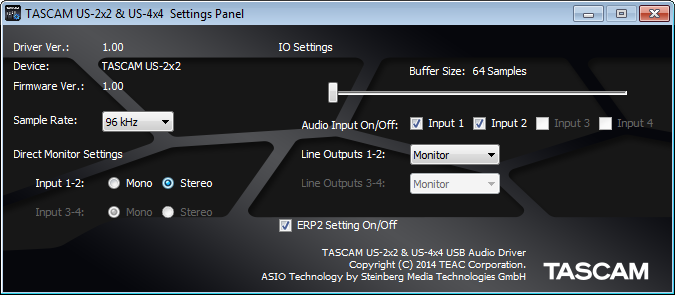 Fig. 1: The control panel for TASCAM’s US-2×2 and US-4×4 audio interfaces is showing that the sample buffer is set to 64 samples.
Fig. 1: The control panel for TASCAM’s US-2×2 and US-4×4 audio interfaces is showing that the sample buffer is set to 64 samples.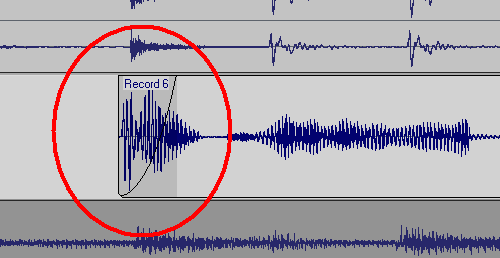
 This peak is considerably louder than the rest of the vocal, but reducing it a few dB will bring it into line.
This peak is considerably louder than the rest of the vocal, but reducing it a few dB will bring it into line. The clip on the left has been normalized and faded out. The silence between clips has been cut away. The clip on the right fades in, but has not been normalized.
The clip on the left has been normalized and faded out. The silence between clips has been cut away. The clip on the right fades in, but has not been normalized.

 A few weeks ago SESAC announced their 2013 Jazz Award recipients, and
A few weeks ago SESAC announced their 2013 Jazz Award recipients, and 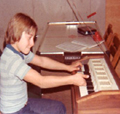 Bobbi who is also PKA “Funkee Boy” has amassed an impressive amount of credits throughout his music career. At the young age of 15 he was already making a name for himself winning the Connecticut State Organ Championship and also opening for national acts such as Spyro Gyra. As he progressed he scored numerous chart hits across multiple music genres, as well as, several top Billboard chart hits/Top 5 Smooth Jazz hits, and licensing deals on television networks such as ABC, FOX, NBC, CBS, SHOWTIME, VH1, etc.
Bobbi who is also PKA “Funkee Boy” has amassed an impressive amount of credits throughout his music career. At the young age of 15 he was already making a name for himself winning the Connecticut State Organ Championship and also opening for national acts such as Spyro Gyra. As he progressed he scored numerous chart hits across multiple music genres, as well as, several top Billboard chart hits/Top 5 Smooth Jazz hits, and licensing deals on television networks such as ABC, FOX, NBC, CBS, SHOWTIME, VH1, etc.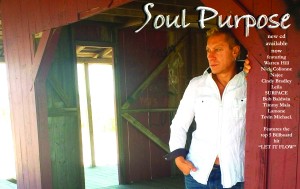 Most recently, starting off 2014 by releasing his 3rd CD “Soul Purpose”, the smooth jazz keyboardist/producer combined his talents with assembling a stellar line up of A-List recording artists. The newest award-winning record “Soul Purpose” features guest appearances from Warren Hill, Najee, Bob Baldwin, Cindy Bradley, Nick Colionne, LEILA, Surface, Lamone, Timmy Maia, Tevin Michael and more!!!
Most recently, starting off 2014 by releasing his 3rd CD “Soul Purpose”, the smooth jazz keyboardist/producer combined his talents with assembling a stellar line up of A-List recording artists. The newest award-winning record “Soul Purpose” features guest appearances from Warren Hill, Najee, Bob Baldwin, Cindy Bradley, Nick Colionne, LEILA, Surface, Lamone, Timmy Maia, Tevin Michael and more!!! Hitting the Top 5 on any Billboard Chart is not an easy thing to do. Besides the songs and production alone (which he does ALL in SONAR INCLUDING Mastering), Bobbi also has to oversee the efforts for Radio Promotion, Publicity, Social Media, Sales and Marketing. If you ask me, this is a very rare skill-set to have as an artist considering just the time it takes alone to write and record a [great] full length record. Bobbi does have help from his wife Leila who is also a very credible artist, and the two of them seem to have a great formula for getting the music out to the masses as if they were a Major Label.
Hitting the Top 5 on any Billboard Chart is not an easy thing to do. Besides the songs and production alone (which he does ALL in SONAR INCLUDING Mastering), Bobbi also has to oversee the efforts for Radio Promotion, Publicity, Social Media, Sales and Marketing. If you ask me, this is a very rare skill-set to have as an artist considering just the time it takes alone to write and record a [great] full length record. Bobbi does have help from his wife Leila who is also a very credible artist, and the two of them seem to have a great formula for getting the music out to the masses as if they were a Major Label. Have you ever been to a show and seen someone on stage that makes you never want to pick up your instrument again? Enter… Shawn Clement. Hollywood Composer/Producer Shawn Clement graciously unleashed his new composition at the Beverly Hills Gibson Showroom tonight to a warm, yet star-studded group of industry folks from all walks of life. Billed in half as a pre-AES party, many folks were in town to celebrate Shawn’s new work Raw Fungus, Cakewalk’s new path at Gibson, and hard working music-makers in general.
Have you ever been to a show and seen someone on stage that makes you never want to pick up your instrument again? Enter… Shawn Clement. Hollywood Composer/Producer Shawn Clement graciously unleashed his new composition at the Beverly Hills Gibson Showroom tonight to a warm, yet star-studded group of industry folks from all walks of life. Billed in half as a pre-AES party, many folks were in town to celebrate Shawn’s new work Raw Fungus, Cakewalk’s new path at Gibson, and hard working music-makers in general. If you don’t know Shawn, his story is unique. It stems from a long path of crazy influences, crazy talent, and crazy work ethic which has made him one of the most sought after composers in Hollywood. We would like to think he owes it all to SONAR, but we know that is not the case 😉
If you don’t know Shawn, his story is unique. It stems from a long path of crazy influences, crazy talent, and crazy work ethic which has made him one of the most sought after composers in Hollywood. We would like to think he owes it all to SONAR, but we know that is not the case 😉 
